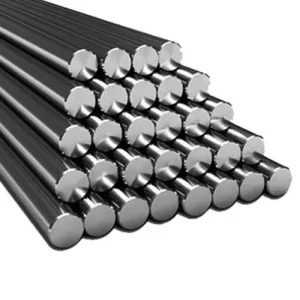Tool steel, renowned for its exceptional hardness and durability, is a critical component in various industrial applications. The hardness of tool steel plays a pivotal role in its performance, making it the preferred choice for precision cutting, molding, and shaping tasks. In this extensive exploration, we will delve into the intricate factors that determine the hardness of tool steel, shedding light on the metallurgical secrets that make it a powerhouse in the world of materials engineering.
1. Introduction
Tool steel’s hardness is not a mere coincidence; it is the result of meticulous alloying and heat treatment processes. Understanding the factors that contribute to its hardness is essential for selecting the right tool steel grade for specific applications and optimizing tool performance.
2. What is Tool Steel?
 2.1. Defining Tool Steel
2.1. Defining Tool Steel
Tool steel is a specialized alloy engineered to excel in hardness, toughness, and wear resistance. It is primarily used for the production of cutting tools, dies, and molds in industries where precision and durability are non-negotiable.
3. The Metallurgical Dance: Factors Behind Tool Steel Hardness
3.1. Carbon Content
3.1.1. High Carbon Content
One of the primary determinants of tool steel hardness is its carbon content. Tool steels typically have higher carbon content compared to other types of steel. The presence of a significant amount of carbon enables the formation of hard and wear-resistant carbides, contributing to the steel’s hardness.
3.1.2. Low Carbon Content
In contrast, lower carbon content results in a softer steel, which may be preferred for applications where extreme hardness is not required.
3.2. Alloying Elements
3.2.1. Chromium
The inclusion of chromium in tool steel enhances its hardenability and corrosion resistance. Chromium forms chromium carbides, which contribute to hardness. Stainless tool steels, for instance, contain chromium to improve both hardness and resistance to rust.
3.2.2. Vanadium
Vanadium is a potent alloying element that forms vanadium carbides, significantly boosting tool steel hardness and wear resistance. High-speed tool steels often contain vanadium for this reason.
3.2.3. Tungsten
Tungsten, like vanadium, forms hard carbides, making it an excellent choice for enhancing hardness in tool steel. It is commonly found in high-speed and hot-work tool steels.
3.3. Heat Treatment
3.3.1. Quenching
Quenching is a critical step in the heat treatment process. It involves rapidly cooling the tool steel from a high temperature, creating a hardened microstructure. The rate of cooling can significantly affect the hardness achieved.
3.3.2. Tempering
Tempering follows quenching and involves reheating the steel to a specific temperature. This process imparts toughness and relieves some of the extreme hardness induced during quenching. The tempering temperature and duration are carefully controlled to achieve the desired balance between hardness and toughness.
3.4. Microstructure
The microstructure of tool steel is crucial in determining its hardness. Fine, uniform carbide distribution within the steel matrix contributes to higher hardness. Factors such as alloy composition, heat treatment, and cooling rates all influence the microstructure.
4. Types of Tool Steel and Their Hardness
Different types of tool steel are engineered to achieve specific hardness levels and properties. Common tool steel types include:
- D2 Tool Steel: Known for its high hardness and wear resistance.
- A2 Tool Steel: Offers a balance of hardness and toughness.
- M2 High-Speed Steel: Exceptional hardness and heat resistance for high-speed cutting.
- O1 Tool Steel: Versatile, with good hardness and machinability.
5. The Role of Hardness in Tool Steel Performance
The hardness of tool steel is directly linked to its performance in various applications. Harder tool steel can maintain a sharp cutting edge, resist wear, and withstand heavy mechanical stresses, making it ideal for precision cutting and forming.
6. Selecting the Right Tool Steel Hardness
 Choosing the appropriate tool steel hardness depends on the specific requirements of the application. Factors to consider include the material being worked on, the desired tool life, and the operational conditions.
Choosing the appropriate tool steel hardness depends on the specific requirements of the application. Factors to consider include the material being worked on, the desired tool life, and the operational conditions.
7. Frequently Asked Questions (FAQs)
7.1. Can tool steel be too hard?
Yes, tool steel can be too hard for certain applications. Excessive hardness can make the tool brittle, leading to premature failure. Achieving the right balance between hardness and toughness is essential.
7.2. Are there eco-friendly alternatives to traditional tool steel?
Emerging materials, such as advanced ceramics and composites, are being explored as eco-friendly alternatives to traditional tool steel. However, their adoption is still evolving, and their hardness and performance may vary.
7.3. Can tool steel hardness be modified after production?
Yes, tool steel hardness can be modified through heat treatment processes such as tempering, which can reduce extreme hardness to achieve the desired balance between hardness and toughness.
7.4. How is tool steel hardness measured?
Tool steel hardness is commonly measured using the Rockwell C or Rockwell A scale, depending on the specific alloy and application.
8. Conclusion
Tool steel’s hardness is not a single attribute but a complex interplay of factors, including carbon content, alloying elements, heat treatment, and microstructure. Understanding these elements is vital for choosing the right tool steel grade for various applications and optimizing tool performance. Tool steel’s exceptional hardness is a testament to the precision of materials engineering and its enduring role in industries that demand nothing less than excellence.
